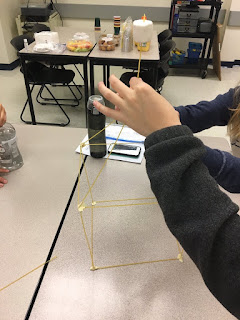Excuse the pun, but it was like clockwork. I would assign a group project (something like making a concept map), give them 20 minutes, and set the classroom timer. The timer would go off and nearly all the groups would ask for more time - usually about five minutes. It got to the point where I would just add five minutes into the plan but then they'd still want more time.
It wasn't as if they hadn't been working the entire time; they were just really invested in getting it perfect. Even the smallest detail, like the use of colors, had to be debated. I explained that these details didn't matter as much as the connections they were making, but somewhere they got the notion that the presentation of their ideas was paramount.
Then I was introduced to Design Thinking and the principles of bias to action and prototyping to a solution. I decided to apply these principles to the problem of students attempting to create the perfect poster. I went back to giving groups only twenty minutes but I broke it up into smaller intervals - each with a defined purpose.
First three minutes: organize the concepts in a way that reflects how you see them related and glue them on the paper.
I knew if I simply moved on to the next phase nothing would change; they would get stuck in the same old debates. Therefore, I had the groups rotate clockwise around the room. They were now looking at another group's vision of how the concepts might be arranged.
Next three minutes: consider the previous group's arrangement, talk through what the arrangement might represent, and add connections (nothing more).
During this time, I kept reminding them that the previous group had only spent three minutes coming up with the configuration of concepts upon which they were working. There was nothing they could do to ruin it. This was simply a prototype and they had limited time to add their contributions. After three minutes, they rotated clockwise to a new group's poster.
Third interval of three minutes: consider the work of the previous groups, talk through what the work represents, and add descriptions to the connections.
I reminded them that only six minutes of work had gone into poster. The previous groups didn't really have anything invested in what was already done. So they shouldn't worry about doing anything that might change the poster. I even encouraged them to add new connections if they thought it made sense. After three minutes, they rotated clockwise to another new poster.
Fourth, fifth, and sixth intervals of three minutes: repeated the previous intervals - add more concepts, add more connections, and add more descriptions.
Each time, I repeated the mantra: "The other groups only spent three minutes on the poster. You can't ruin it. Just get to work."
After 18 minutes, each group returned to their original poster. There were some audible gasps and laughs. Rarely had the poster turned out as expected but each group could infer the intent behind the decisions other groups had made. They spent the last two minutes creating an artist statement for their concept map - something they thought an observer ought to notice.
None of the groups asked for more time. They were satisfied that the posters were prototypes - works in progress that allowed viewers to add their own perspective. We used the "extra" five minutes to do a gallery walk and see how our work turned out.

























